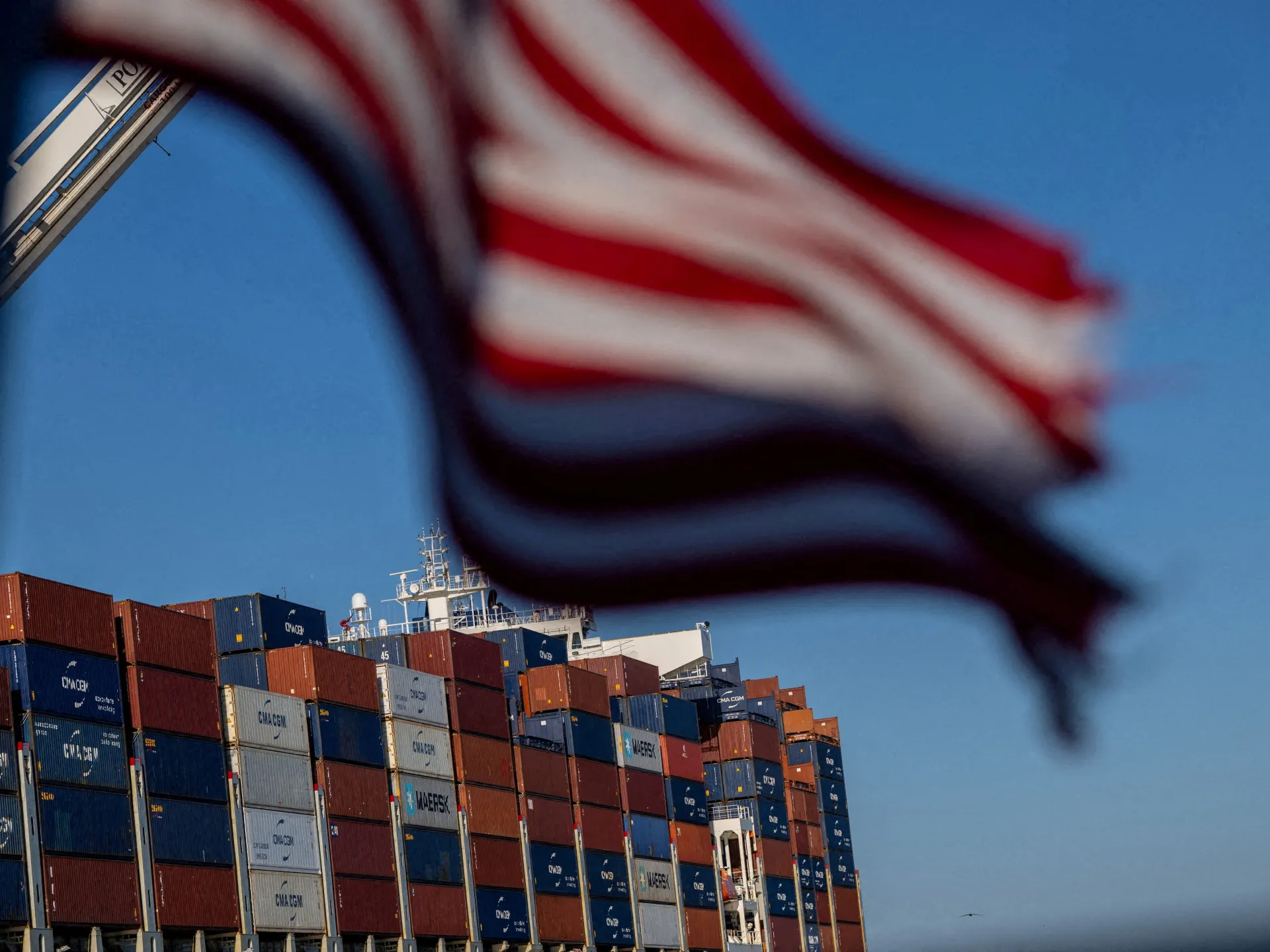The United States and China have started charging additional port fees on ocean shipping firms that move everything from holiday toys to crude oil, making the high seas a key front in the trade war between the world’s two largest economies.
A return to an all-out trade war appeared imminent last week, after China announced a major expansion of its rare earths export controls, and US President Donald Trump threatened to raise tariffs on Chinese goods to triple digits.
Recommended Stories
list of 3 itemsend of list
But after the weekend, both sides sought to reassure traders and investors, highlighting cooperation between their negotiating teams and the possibility they could find a way forward.
China said it had started to collect the special charges on US-owned, operated, built or flagged vessels, but it clarified that Chinese-built ships would be exempted from the levies.
In details published by state broadcaster CCTV, China spelled out specific provisions on exemptions, which also include empty ships entering Chinese shipyards for repair.
Similar to the US plan, the new China-imposed fees would be collected at the first port of entry on a single voyage or for the first five voyages within a year.
“This tit-for-tat symmetry locks both economies into a spiral of maritime taxation that risks distorting global freight flows,” Athens-based Xclusiv Shipbrokers said in a research note.
Early this year, the Trump administration announced plans to levy the fees on China-linked ships to loosen the country’s grip on the global maritime industry and bolster US shipbuilding.
An investigation during the administration of former US President Joe Biden concluded that China uses unfair policies and practices to dominate the global maritime, logistics and shipbuilding sectors, clearing the way for those penalties.
China hit back last week, saying it would impose its own port fees on US-linked vessels from the same day the US fees took effect.
“We are in the hectic stage of the disruption, where everyone is quietly trying to improvise workarounds, with varying degrees of success,” said independent dry bulk shipping analyst Ed Finley-Richardson. He said he has heard reports of US shipowners with non-Chinese vessels trying to sell their cargoes to other countries while en route, so the vessels can divert.
The Reuters news agency was not immediately able to confirm this.
Tit-for-tat moves
Analysts expect China-owned container carrier COSCO to be the most affected by the US fees, shouldering nearly half of that segment’s expected $3.2bn cost from the fees in 2026.
Major container lines, including Maersk, Hapag-Lloyd and CMA CGM, slashed their exposure by switching China-linked ships out of their US shipping lanes. Trade officials there reduced fees from initially proposed levels, and exempted a broad swath of vessels after heavy pushback from the agriculture, energy and US shipping industries.
The Office of the US Trade Representative (USTR) did not immediately respond to a request for comment from Reuters.
China’s Ministry of Commerce on Tuesday said, “If the US chooses confrontation, China will see it through to the end; if it chooses dialogue, China’s door remains open.”
In a related move, Beijing also imposed sanctions on Tuesday against five US-linked subsidiaries of South Korean shipbuilder Hanwha Ocean, which it said had “assisted and supported” a US probe into Chinese trade practices.
Hanwha, one of the world’s largest shipbuilders, owns Philly Shipyard in the US and has won contracts to repair and overhaul US Navy ships. Its entities will also build a US-flagged LNG carrier.
Hanwha said it is aware of the announcement and is closely monitoring the potential business impact. Hanwha Ocean’s shares sank by nearly 6 percent.
China also launched an investigation into how the US probe affected its shipping and shipbuilding industries.
A Shanghai-based trade consultant said the new fees may not cause significant upheaval.
“What are we going to do? Stop shipping? Trade is already pretty disrupted with the US, but companies are finding a way,” the consultant told Reuters, requesting anonymity because he was not authorised to speak with the media.
The US announced last Friday a carve-out for long-term charterers of China-operated vessels carrying US ethane and liquefied petroleum gas (LPG), deferring the port fees for them through December 10.
Meanwhile, ship-tracking company Vortexa identified 45 LPG-carrying VLGCs — an acronym for very large gas carriers, a type of vessel — that would be subject to China’s port fee. That amounts to 11 percent of the total fleet.
Clarksons Research said in a report that China’s new port fees could affect oil tankers accounting for 15 percent of global capacity.
Meanwhile, Omar Nokta, an analyst at the financial firm Jefferies, estimated that 13 percent of crude tankers and 11 percent of container ships in the global fleet would be affected.
Trade war embroils environmental policy
In a reprisal against China curbing exports of critical minerals, Trump on Friday threatened to slap additional 100 percent tariffs on goods from China and put new export controls on “any and all critical software” by November 1.
Administration officials, hours later, warned that countries voting this week in favour of a plan by the United Nations International Maritime Organization (IMO) to reduce planet-warming greenhouse gas emissions from ocean shipping could face sanctions, port bans, or punitive vessel charges.
China has publicly supported the IMO plan.
“The weaponisation of both trade and environmental policy signals that shipping has moved from being a neutral conduit of global commerce to a direct instrument of statecraft,” Athens-based Xclusiv said.
